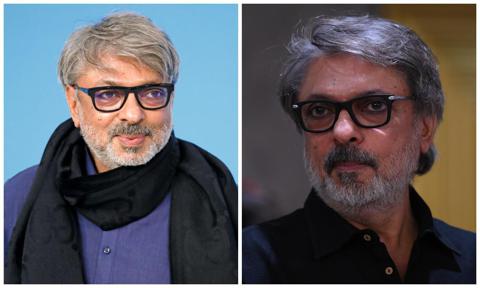
Why he matters: His films are a symphony of emotions woven into frames that resemble art. Devdas set the bar, followed by dramas like Hum Dil De Chuke Sanam, Black and Guzaarish. But why does an SLB movie resonate long after the credits roll? Veteran cinema observer Bhawana Somaaya observes.
The first time I heard of Sanjay Leela Bhansali was when he was assisting Vidhu Vinod Chopra during Parinda, and a few years later, signed to choreograph the songs of 1942: A Love Story. Anil Kapoor, who featured in both, told me, “Vinod has an assistant who’s eccentric, but he knows his craft and will be big one day.” And acknowledging Sanjay’s talent, Chopra credited him with a title unheard of at that time: Director Choreography.
The Birth of Brilliance
Two years later, Bhansali was ready to debut as director. Critics loved Khamoshi: The Musical (1996), but the film failed at the box office. The rejection hurt, and he diverted his energy into enhancing his creativity. He was less guarded now and confessed that Amitabh and Jaya Bachchan were his original choice to play Manisha Koirala’s deaf and mute parents in the movie, “but I lacked the confidence to contact them.”
Hum Dil De Chuke Sanam (1999) was a blockbuster and swept all the awards of the year. His biggest compliment came from Krishna Kapoor, when she said his film reminded her of Raj Kapoor’s Sangam. Bhansali was over the moon!
In Pursuit of Perfection
All creative people are obsessive, but Bhansali works like a man possessed. His assistants complain that they can’t keep pace with him. He’s hypersensitive and, at times, unable to contain himself!
I remember visiting the sets of Hum Dil... on the last day of shooting. He looked forlorn, and when he walked me through the magnificent crafted pillars and sparkling chandeliers, he said, “Something breaks inside me every time I conclude a film...”
Equally upbeat about a new project, he looked forward to working with a new ambience, artistes, technicians and musicians. “How do you choose your subjects?” I asked. He smiled, “I don’t. My subjects choose me. I first hear the sound, the violin, the drums or the chimes. Then I see the visuals, and I know that I’m ready.”
Trouble hounded him at every step during the making of Devdas. First, Shah Rukh Khan underwent a back surgery. Then his producer, Bharat Shah, was arrested and later hospitalised. Shooting schedules were interrupted, but Sanjay viewed it all philosophically. “I’m making a film on a flawed hero. It’s not possible to be unaffected by his misfortune,” he had said.
The problems aggravated as the shoot progressed, and a time came when there were no funds. But Sanjay was yearning for a special fabric in a particular scene...
“When I’m shooting, I’m unreasonable because I don’t believe you need money to make films. You need passion, and I get what I want.”
Cinema, His Beloved
Pain is a recurrent motif in Bhansali’s films — and his life. Tragedies have followed him since he lost his father, producer Navin Bhansali, as an adolescent. It’s a trauma he hasn’t recovered from. Perhaps why he consciously surrounds himself with positivity and seeks light in the darkest plots.
For instance, Guzaarish was a story of a paralysed magician, and Black was about disabilities. Shooting Black with his idol, Amitabh Bachchan, was a high point in his life, and he was determined to not let anything go wrong. But it did! One early morning, as Bhansali was leaving home for work, his phone rang. His set was up in flames! The entire set had turned to ashes within moments. Sanjay locked himself in his room, but when he emerged hours later, he said, “I’ll build a more attractive set and make a great film.”
Sometimes, his best efforts didn’t pay off due to destructive, negative energies around him. Like Saawariya in 2007. It was a journey of bitter battles, where destiny favoured the opponents... Bhansali bided his time and waited for music to ring in his ears. And when the music, combined with colourful visuals, beckoned, he delivered Goliyon Ki Raasleela Ram-Leela in 2013.
Ever since, the scale and the grandeur of his cinema has risen — and so have the controversies. In Bajirao Mastani (2015), he was accused of tampering with history. In Padmaavat (2018), he was attacked by the Rajput community, and what began as a community bashing snowballed into national politics. The filmmaker was publicly lynched, humiliated, his set vandalised, and his team assaulted.
After the barbaric episode, one feared Bhansali may retreat into a shell to never return to the arc lights, but he rose from the ashes and announced Gangubai Kathiawadi, saying, “Nothing can come in the way of my passion. Cinema is my beloved... And my life.”
To see who else is on the list, grab the copy of HELLO! India’s August 2023 issue right here!
- Quick links
- HELLO! 100 Most Influential
- Sanjay Leela Bhansali






